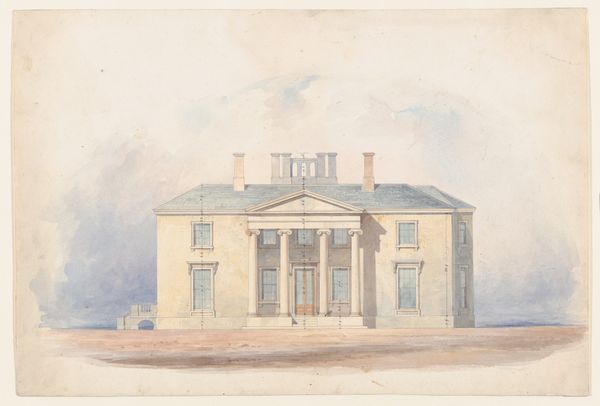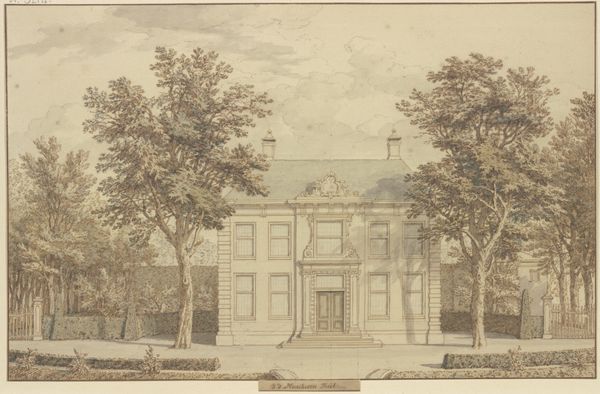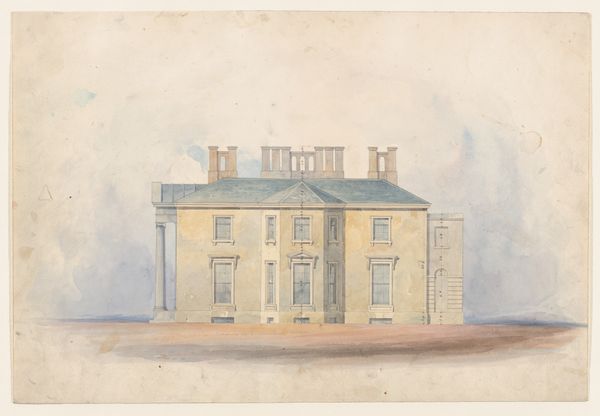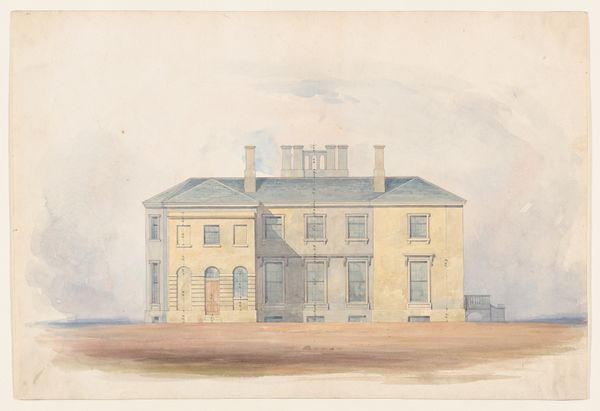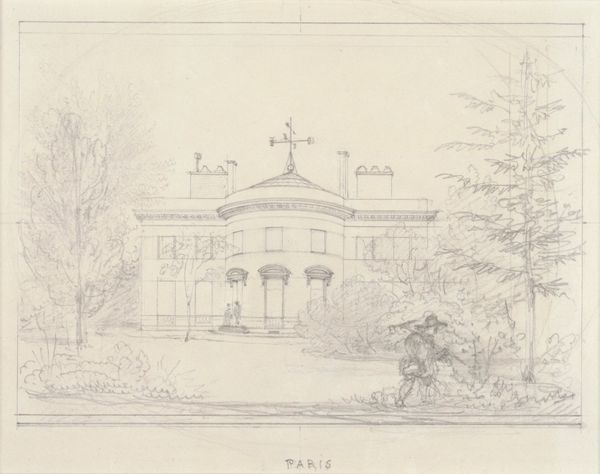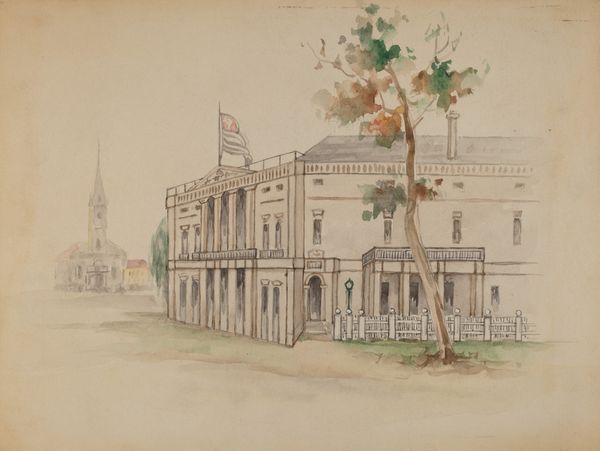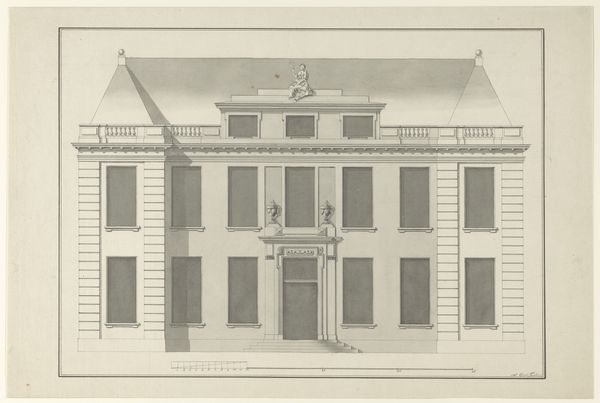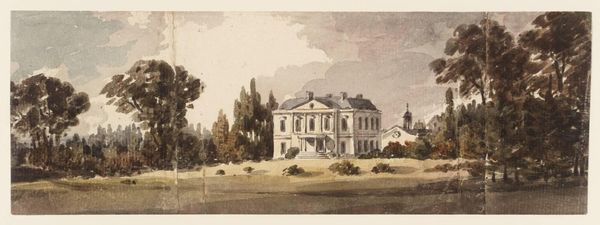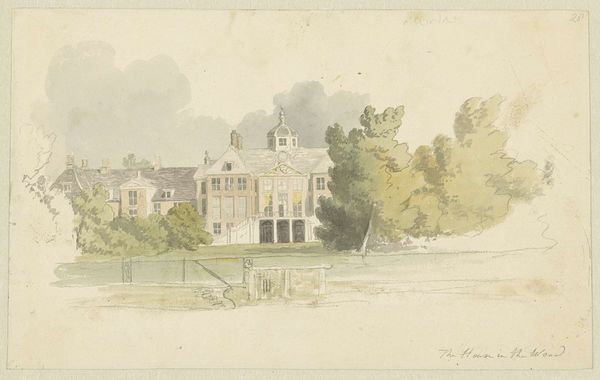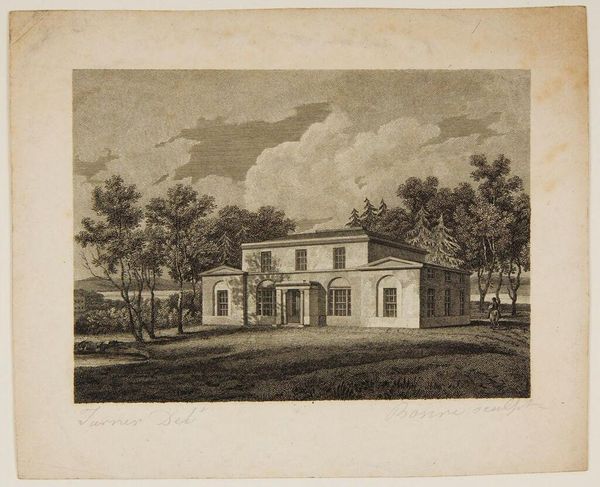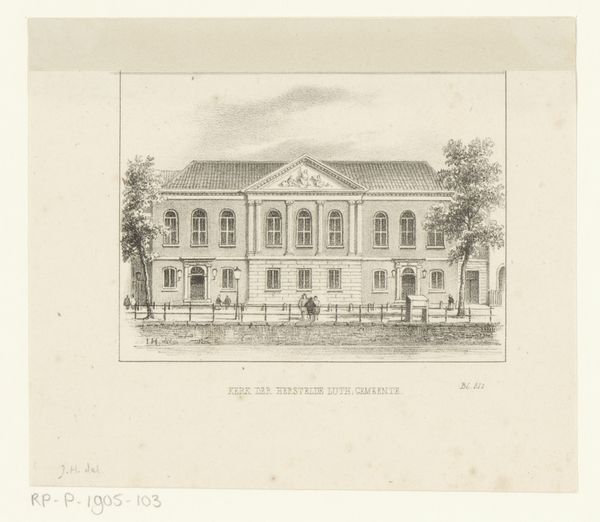
drawing, print, paper, watercolor, architecture
#
drawing
#
neoclacissism
# print
#
landscape
#
paper
#
watercolor
#
cityscape
#
watercolor
#
architecture
Dimensions: sheet: 12 3/8 x 16 3/8 in. (31.4 x 41.6 cm)
Copyright: Public Domain
Editor: Here we have "An Italianate Villa" by Henry Edward Kendall Jr., dating sometime between 1820 and 1885. It's rendered in watercolor and ink on paper. The villa itself looks so serene, but almost…staged? Like a backdrop. What do you see in this piece? Curator: It’s interesting you say “staged.” Consider how the proliferation of these villa images reinforced ideals of bourgeois respectability. What message was the artist trying to convey by placing this carefully constructed building within the natural world? Editor: I hadn't really thought of it that way. It seems to highlight control, almost like claiming dominance over nature. Was this a common sentiment in that era? Curator: Exactly. Think about the context. This drawing emerges in the period where architectural styles become closely linked to national identity and aspirations of social climbing. Who did these idealized villas cater to, and what values did they embody? It promotes power, privilege, and cultivated taste. Do you think its display in a museum changes or reinforces that original message? Editor: That’s a fascinating point. Seeing it here, divorced from its original social context, almost romanticizes that bygone era, stripping away the complex power dynamics that were at play. I guess, the museum, by showing it, kind of validates its status as “art”. Curator: Precisely. It underscores the power of institutions to shape narratives, even around something as seemingly simple as a house portrait. Reflect on how such representations in art contribute to and shape social perceptions. Editor: I never thought about it that way before. I came expecting just another pretty landscape, but I’m leaving thinking about the politics of architectural imagery! Curator: Indeed! Art is so much more when viewed as part of larger historical and social currents. It seems, in many cases, art promotes societal inequality by celebrating only those in positions of power and wealth.
Comments
No comments
Be the first to comment and join the conversation on the ultimate creative platform.
